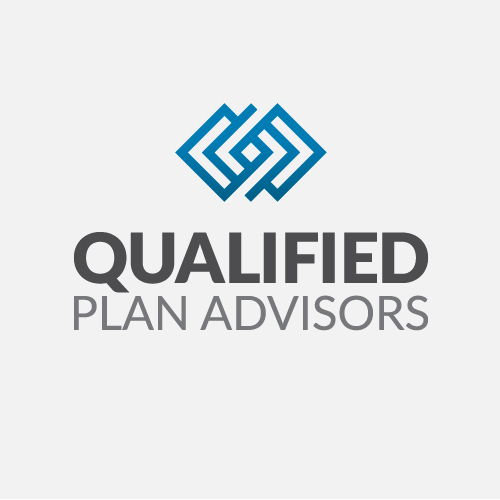The Bottom Line
- Equities finished another volatile week solidly lower, with the S&P 500 dropping ‐1.9%. After leading large caps for three consecutive weeks, the small cap Russell 2000 fell sharply, losing ‐4.2% for the week.
- The yield on the 10‐year U.S. Treasury was little changed, down‐1 basis point, but that masked some big swings in the bond market. Following a surprisingly hawkish tone by the Fed, short yields doubled and long yields fell.
- Homebuilder confidence remains historically high, but it has been dropping lately and now building permits are falling too. Meanwhile May retail sales were softer than expected and unemployment claims unexpectedly rose.
Stocks battered, yield curve flatter
Global equities finished another volatile week solidly lower, as the U.S. Federal Reserve surprised markets by forecasting earlier‐than‐expected rate hikes and indicated it will discuss tapering asset purchases in coming meetings. The Federal Open Market Committee (FOMC) is now forecasting that it will hike rates twice in 2023 after previously predicting no hikes until 2024. Comments from St. Louis Fed President James Bullard—a non‐voting member this year—added to the Fed’s hawkish tenor with his comments Friday morning. The so called “reflation trade”, which favored value stocks and commodities, came under immediate pressure following the FOMC shift. The bond market also saw significant swings this week as the Treasury yield curve flattened noticeably, with the yield on the 2‐year note almost doubling and longer‐term yields, such as the 30‐year bond, falling (the 30‐ year US Treasury yield plunged ‐16 basis points on Thursday alone). The U.S. Dollar Index rallied to levels not seen since April. Economic data didn’t help as May retail sales came in softer than expected, manufacturing growth in New York and Philadelphia slowed, jobless claims snapped a string of weekly declines, and producer inflation ran hot.
Digits & Did You Knows
SLIGHTLY USED — The average age of vehicles on U.S. roads last year was 12.1 years, a record high. The average has been rising steadily for 15 years as car quality has improved, but the pandemic accelerated the trend (source: Dow Jones).
LEAVING TOWN — Between 7/01/19 and 6/30/20, 5 of the 10 largest cities in the U.S. saw their populations decline – New York City, Los Angeles, Chicago, Philadelphia and San Jose (source: Census Bureau, BTN Research).
SPENDING — Americans imported $278 billion of foreign goods and services in March 2021 and $274 billion of imports in April 2021, the 2 highest months in U.S. history (source: Bureau of Econ. Analysis, BTN Research).
Click here to see the full review.
—
Source: Bloomberg. Asset‐class performance is presented by using market returns from an exchange‐traded fund (ETF) proxy that best represents its respective broad asset class. Returns shown are net of fund fees for and do not necessarily represent performance of specific mutual funds and/or exchange‐traded funds recommended by the Prime Capital Investment Advisors. The performance of those funds may be substantially different than the performance of the broad asset classes and to proxy ETFs represented here. U.S. Bonds (iShares Core U.S. Aggregate Bond ETF); High‐YieldBond(iShares iBoxx $ High Yield Corporate Bond ETF); Intl Bonds (SPDR® Bloomberg Barclays International Corporate Bond ETF); Large Growth (iShares Russell 1000 Growth ETF); Large Value (iShares Russell 1000 ValueETF);MidGrowth(iSharesRussell Mid-CapGrowthETF);MidValue (iSharesRussell Mid‐Cap Value ETF); Small Growth (iShares Russell 2000 Growth ETF); Small Value (iShares Russell 2000 Value ETF); Intl Equity (iShares MSCI EAFE ETF); Emg Markets (iShares MSCI Emerging Markets ETF); and Real Estate (iShares U.S. Real Estate ETF). The return displayed as “Allocation” is a weighted average of the ETF proxies shown as represented by: 30% U.S. Bonds, 5% International Bonds, 5% High Yield Bonds, 10% Large Growth, 10% Large Value, 4% Mid Growth, 4% Mid Value, 2% Small Growth, 2% Small Value, 18% International Stock, 7% Emerging Markets, 3% Real Estate.
Advisory services offered through Prime Capital Investment Advisors, LLC. (“PCIA”), a Registered Investment Adviser. PCIA doing business as Prime Capital Wealth Management (“PCWM”) and Qualified Plan Advisors (“QPA”).
© 2021 Prime Capital Investment Advisors, 6201 College Blvd., 7th Floor, Overland Park, KS 66211.











 that jumped +26.6%. Gains like those, even off the extraordinarily low bases from the depths of last year’s COVID lockdowns, are bound to create inflation concerns. U.S. stocks pulled back more than ‐4% from the May 7th all‐time highs in both the second and third weeks of the month, and VIX volatility spiked to about 28 and 26 on each of those declines. But in the end the bulls took the victory as investors pushed aside the inflation fears in favor of recovery optimism. The S&P 500 rose +0.7% to post its fourth consecutive positive month, and sixth of the past seven. The small‐cap Russell 2000 index, which is more leveraged to the economic reopening, posted its eighth straight positive month for the first time since 1995.
that jumped +26.6%. Gains like those, even off the extraordinarily low bases from the depths of last year’s COVID lockdowns, are bound to create inflation concerns. U.S. stocks pulled back more than ‐4% from the May 7th all‐time highs in both the second and third weeks of the month, and VIX volatility spiked to about 28 and 26 on each of those declines. But in the end the bulls took the victory as investors pushed aside the inflation fears in favor of recovery optimism. The S&P 500 rose +0.7% to post its fourth consecutive positive month, and sixth of the past seven. The small‐cap Russell 2000 index, which is more leveraged to the economic reopening, posted its eighth straight positive month for the first time since 1995. Importantly, vaccination rates in Europe have picked up after a relatively slow start. That has helped Eurozone economic sentiment improve for four straight months and hit its highest level since 2018.The COVID crisis in India has also made much needed progress with over 190 million vaccines so far administered–only behind the totals of US and China. As a result, those economies are also rebounding nicely. As seen in the chart above, both developed and emerging international PMIs are rising and are well into expansion levels (above 50). The MSCI EAFE Index gained +3.3% in May, outperforming U.S. stocks for the first time in 2021.
Importantly, vaccination rates in Europe have picked up after a relatively slow start. That has helped Eurozone economic sentiment improve for four straight months and hit its highest level since 2018.The COVID crisis in India has also made much needed progress with over 190 million vaccines so far administered–only behind the totals of US and China. As a result, those economies are also rebounding nicely. As seen in the chart above, both developed and emerging international PMIs are rising and are well into expansion levels (above 50). The MSCI EAFE Index gained +3.3% in May, outperforming U.S. stocks for the first time in 2021.





